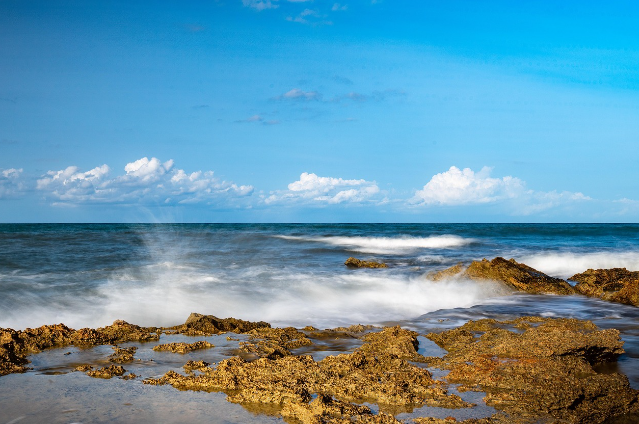
Today, marine acidification appears as one of the most complex and disturbing environmental challenges facing the world’s oceans, triggering technical, ecological, and socio-economic crises in the maritime landscape. This process begins with the tireless absorption of carbon dioxide from the atmosphere, a thread part of the coastal emissions generated by human activities, finding its way into the sea, changing the chemical balance and pushing the pH of the sea less. The pre-industrial sea-pH was around 8.2; Today it hangs close to 8.1, and estimates have warned of another decline in the form of 0.4 units until 2100. It appears that the subtle round is a mantra to increase acidity by 30%, which is sufficient to disrupt physical and biochemical processes in marine life.
There is a carbonate system in the heart of the oceanic acid. CO₂ reacts with seawater and makes carbonic acid, which is later divided into bicarbonate and hydrogen ions. The increase in hydrogen ions reduces the availability of carbon dioxide, which is crucial for shell-building and calculation of organisms such as corals, mollusks, and some plankton. Coral reefs, which create calcium carbonate structures in large and scale through small polyps, are particularly weak - scientists have warned that 70-90% of all coral reefs can be lost by 2040 if the sour trends continue. The Great Barrier Reef in Australia has already shown a decline in flexibility; The incidence of severe bleaching and the slow recovery rate emphasize how the increasing acidity weakens calcium structures and increases the effect of warming sea and pollution.
But the crisis does not spread evenly around the world; Some regions and ecosystems can withstand an inconsistent load. Mapping has become a technical imperative for weak zones marine scientists, distributing sophisticated sensors, remote measurement equipment, and powerful machine learning algorithms to portray high-risk areas. For example, NOAA-led studies use the Aragonite saturation state measure of seawater capacity to support carbonate mineral formation for vulnerability. Areas where the levels of aragonites are chronically low become “hotspots”. Arctic and Antarctica, as well as areas distant from the western coasts of North America, South America, and Africa, are among those identified as particularly weak people. In these areas, the dark water rich water with layers on the surface increases, increases acidification.
Landmark mapping of harness satellite data, observation of blackboard, and recent progress in large climate datasets. For example, ESSIC researchers used Surface Ocean CO₂ data from SOCAT (Surface Ocean CO) Atlas, with regional remote measurement properties and advanced machine learning models to make a monthly map on high resolution of a quarter-degree network from 1998 to 2022. These products revealed the continuous reduction in the elevator in the element of the pH. Trends. Such mapping is not just a technical performance – it is important to shape the protective strategies and adaptive control for fisheries, aquaculture, and coastal protection.
Biological results of acidification of the sea throughout the ecosystem. Shell -produced animals such as oysters, clams, and marine urchins are struggling to maintain their carbonate crust; Weak shells result in a high mortality rate, and the breeding sequence is declining. In the Pacific Northwest of North America, hatcheries have seen a large-scale die-off of elements of the Oyster larvae, which are now bound to the influx of acidic water directly from coastal currents. The scallop industry in British Columbia in the same way faced almost total crop failure in a few years, which was due to low aragonite saturation. In addition to industrial implications, entire indigenous peoples and communities have met financial difficulties as a result of relying on shellfish for their livelihoods.
Ocean acidification also affects high trophic levels. Over the years, the fish was considered less weak, but new research has a nicer picture. Laboratory experiments with clown fish demonstrated that their ability to detect predators is affected by exposure to more acidic conditions affects their ability due to changes in neurological signaling. Embryonic fish, such as Menidia beryllina, show high mortality and development defects in contact with high COO concentrations, high COO concentrations. The entire fishing hours can fail to coordinate effective theft behavior under stress from acidic water, and prevent predators and food chain stability.
Microscopically planted – especially Coccolithophores and Foraminifera – is important for the role of the ocean as the basis for seafood tissue and carbon sequestration. These small organisms perform carbonic sequestration in their calcium carbonate pellets and help regulate atmospheric CO₂. Acidification deletes its shells, making them less and less effective at removing carbon, a subtle but intensive change, threatening the global carbon cycle and increasing climate change. The effects of sea level rise are also linked to other environmental pressures, creating complex risks in weak areas. The acidic water is accompanied by sea dud oxygenation, rising temperature, and plastic pollution, especially in coastal areas with high human impact. Plastic pollution carries the acidification of the future by adding new layers of organic stress by replacing local bacterial colonies, and reducing the availability of calcium carbonate. As a result, the mapping tool and the vulnerability assessment will have to include the multifactor data set to capture the risk profiles in different marine areas correctly.
In summary, mapping of weak areas of acidification of the sea is not just a scientific effort – this is an important call to protect the complex and delicate network in marine life. Examples of the real world, from the collapse of oysters in North America to the subtle collapse of the future, to coral reefs and the subtle collapse of the usual ecosystems, emphasize the need for coordinated action. Remote measurement, data analysis, and technological advances in sea observations help to elucidate the track further, but the solution is eventually tired of reducing atmospheric CO₂ emissions and designing adapted measures for the world’s weakest ocean sites. The fate of marine biodiversity, and services that provide this to humanity, will be determined by how fast and creatively society this invisible still reacts to the intensive crisis.
References –
